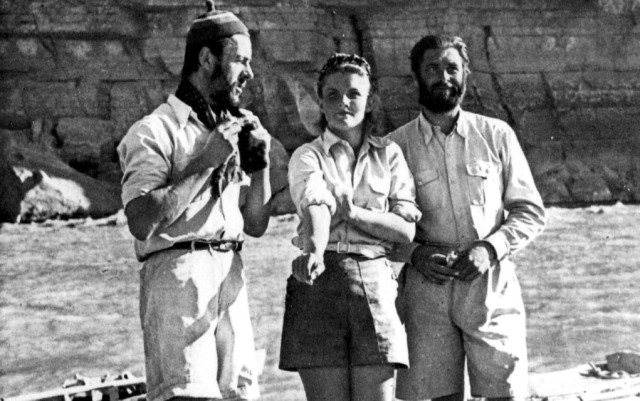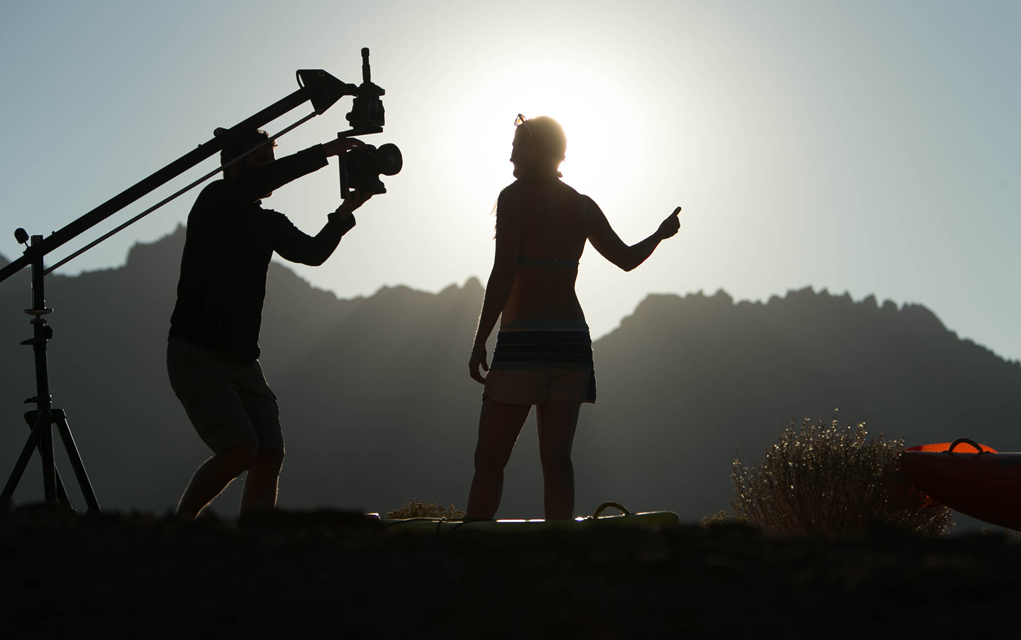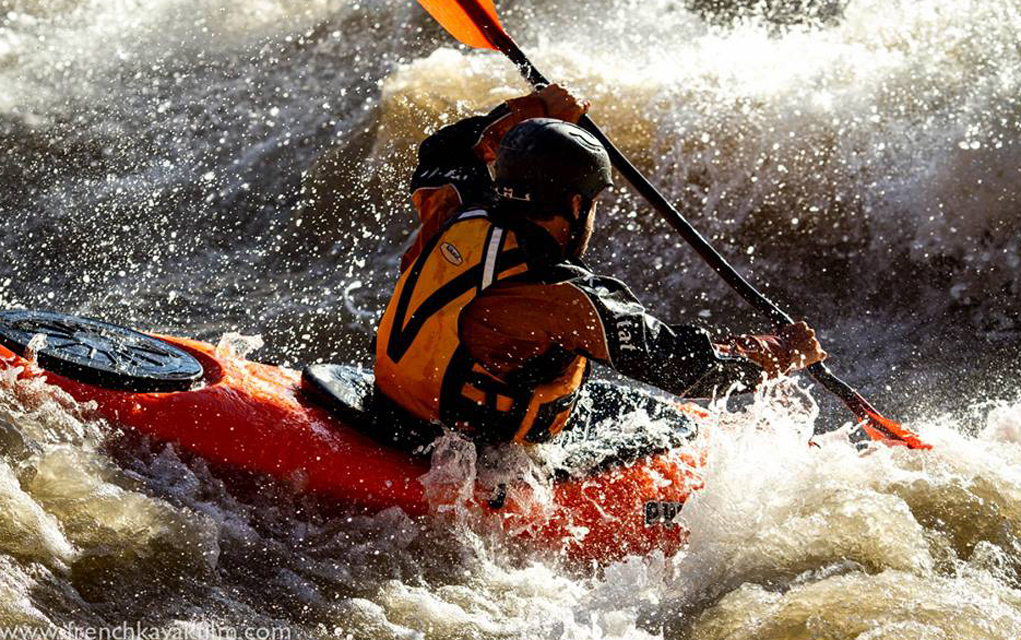
Back in the Old West, being the first to expedition down the Green and Colorado rivers on kayaks for two and a half months just for the sheer adventure of it isn’t something you would think an inexperienced French trio pioneered. But that’s exactly what happened back in 1938, and it’s what inspired filmmaker Ian McCluskey to recreate the same journey to find all the missing pieces of this historical puzzle.
Oh, and the fact that McCluskey had never kayaked before was not about to deter him.
The story of Parisian adventurer Bernard De Colmont, his young bride Genevieve De Colmont and their friend Antoine De Seyne traveling on an ocean liner from France to New York before driving out West to kayak the Whitewater Rivers (as they were known back then) was all but lost until a roadside marker containing a faded photograph of the young trio sparked McCluskey’s child-like curiosity for a modern-day treasure hunt.
“They came with kayaks and camera and beer, and I just thought it was such a curious story,” McCluskey says. “In the course of learning about their adventure, I decide that I have to follow their footsteps down the river and learn how to kayak myself. So then I end up having a kayak adventure, and the film is really two adventures woven together, past and present.”
In Voyagers Without Trace — which has been screened at a half a dozen film festivals nationwide and is set to debut in Boulder at the Dairy Arts Center Feb. 24-27 — McCluskey forms his own kayaking trio with kayaking expert Paul Kuthe and his fiancée, Kate. Following behind them on two rafts, filming ahead of them from the shoreline, or capturing aerial drone footage of the landscape was a small, all-volunteer production team, including a couple of McCluskey’s friends from Uncage the Soul Productions. McCluskey says they faced all the challenges any crew filming in remote areas would face, like keeping batteries powered and protecting expensive cameras in very wet and sandy conditions.

“The cinematography is amazing,” McCluskey says. “We always had the cameras out and ready for some beautiful moment. The camera team was up before dawn, ready to shoot and catch first light, shooting all day long, shooting the sunset, shooting the stars at night, and so for 31 days I think we were averaging three or four hours of sleep a night.”
In Voyagers, the past comes to life in footage from Bernard De Colmont’s 16 mm camera that he brought along during the original trio’s journey. According to McCluskey, the film moved from Bernard’s possession to Antoine’s and then to his son, Raymond De Seyne. It had gone unseen for 75 years, sitting on an attic shelf in De Seyne’s old country chateau in France.
“And [Raymond] pulled it out, and he’s like, ‘Would you like to see this?’ And we’re like, ‘Yes,’” McCluskey says. “Forty to 50 percent of [Voyagers] is their original, color archival footage. And it’s beautiful. It’s really pretty footage ’cause it’s color, and they shot it before Hollywood had even started shooting the first Hollywood color movie.”
Compared to the French trio’s journey, McCluskey’s trip took less than half the time as he traversed over modern day dams and reservoirs, including a couple stretches out of Lake Powell. According to the director, the differences between then and now are clear maps, roads, EMT helicopters, satellite phones and state-of-the-art gear. The original trio sported inflatable life vests and American football helmets while riding in wood and canvas kayaks that wouldn’t make the entire journey in one piece. In comparison, the plastic hard-shelled kayaks of today are more reliable.

“So we had it way, way easier than they had it,” McCluskey says. “We don’t make any pretense that we’re roughing it like they’re roughing it, but we did want to kind of touch that spirit of being in very remote places that they felt. … But I still felt, to me, the consequences were still very scary. That adrenaline and that fear of being capsized and being underwater while your head goes knocking against rocks … those rocks are just as real. Just because it seemed like a good idea at the time, it actually was a lot harder and a lot sort of above my ability. I wasn’t just making a film, I was facing a personal fear about drowning and about putting myself in danger, and I walked away with a lot of courage and a sense of accomplishment.”
The crew’s search didn’t go in vain either as they would explore all the small towns the original trio passed through, meet a person who actually met the kayaking pioneers, come in contact with locals and archivists and stumble upon photos of the trio and original letters written by them.
“Most importantly what we found were these deep and ancient canyons that were essentially completely unchanged since they paddled 75 years before us,” McCluskey says. “I think I took away a real deep respect for the trip that they had made. By reaching into the past to relate to them we can make those similar experiences part of our life in the present, and that is really like the definition and the meaning of legacy: an ordinary person like me can have an extraordinary journey like they did.”

The journey didn’t end for McCluskey and crew at the end of the river, however. He traces the trio’s story back to France and the lives they lived at the beginning of WWII when the Nazis overtook Paris. Among the crew’s finds is not only the lineage and legacy the original trio left behind, but also one of the original kayaks, which was secured in an ancient fortress on a mountaintop.
“On the literal level it’s a story of kayakers and sort of whitewater outdoor recreation, but really it’s more a story, just the spirit of adventure,” says McCluskey. “By them going somewhere they had never been and doing something they’d never done, it inspired me to do something I had never done and go to a place I had never been. Their legacy just keeps inspiring others.”














